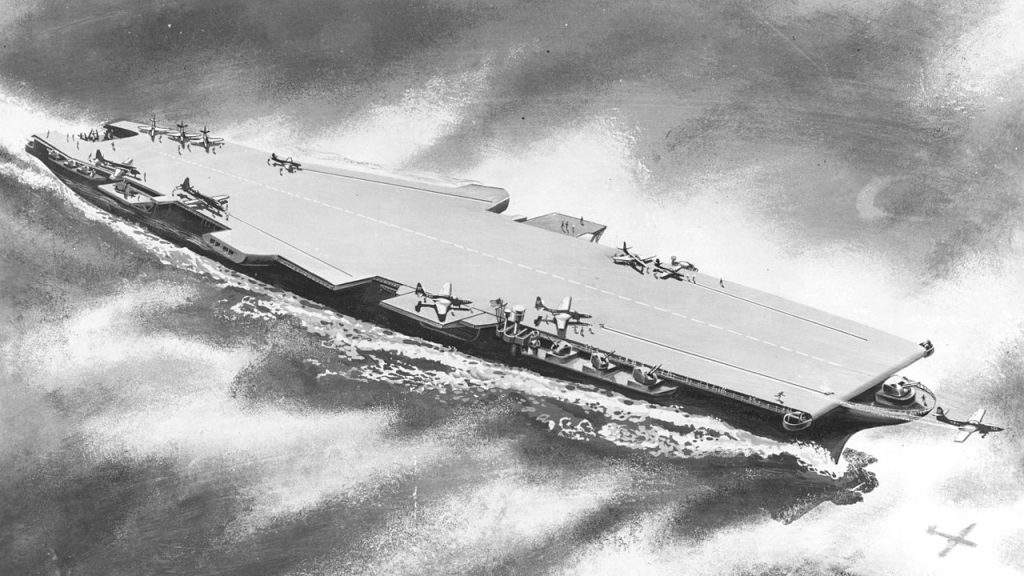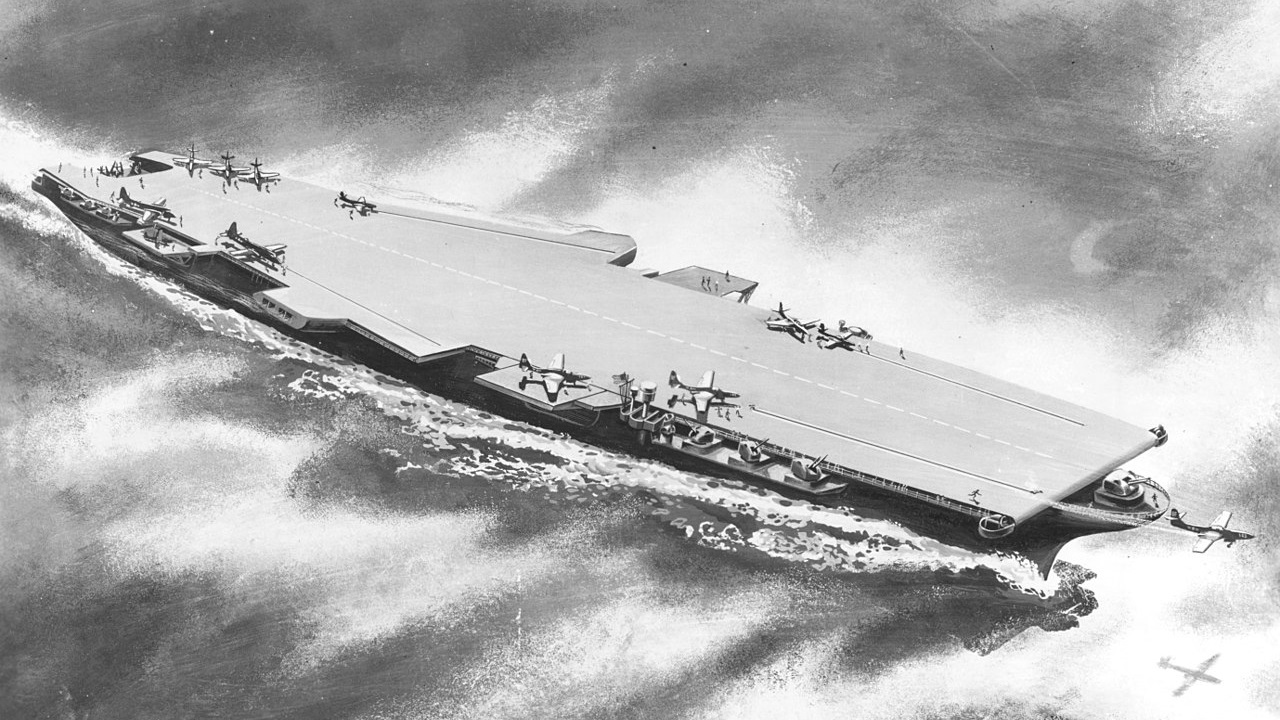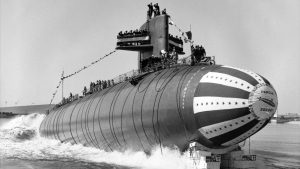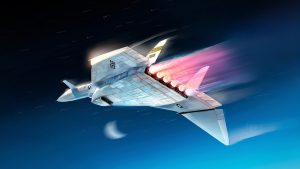It did not mean the end for the supercarrier, and the U.S. Navy adopted the USS Forrestal class, which had more conventional proportions, just five years later.

Two of the five ships called USS America are 74-gun ship of the line that was not built during the American Revolution but was later given to France. A 19th-century racing yacht turned into a naval ship during the American Civil War. Contrary to popular belief, the latter ship is not to be confused with the USS American, a former whaler that Confederate soldiers deliberately sank to hinder shipping in the harbor of Charleston, South Carolina.
The U.S. administration also confiscated the German ocean liner S.S. America, renamed it USS America (ID 3006), and used it as a troop transport. The Kitty Hawk class aircraft carrier CV-66, which has the dubious distinction of being the only supercarrier to be wasted as a target ship, is the only vessel truly called USS America. The USS America (LHA-6) is an amphibious assault ship currently in operation by the United States Navy. At 45,000 tonnes when fully loaded, it is larger than many aircraft carriers used by many foreign militaries.
To further complicate matters, only one ship named USS United States has ever entered service in the history of the United States Navy. That ship was one of the original six frigates that formed the foundation of the Navy in the first part of the 19th century.
Three more ships had to be canceled because of the Washington Treaty. One was a Lexington-class battle cruiser that was more than 10% done. The eighth Nimitz-class aircraft carrier, subsequently named USS Harry S. Truman, was also to be named the USS United States (CVN-75).
Another example is the USS United States (CVA-58), intended to be the flagship of a new class of supercarriers created following World War II. Although its design was considered ambitious and avant-garde, it was most likely completely unworkable. The program was therefore canceled barely five days after her keel was placed.
President Harry S. Truman gave the go-ahead for building five additional “supercarriers” in July 1948. The Navy Appropriations Act of 1949 allocated funding for their development. In some ways, the carrier resembled the “streamline moderne” of the Art Deco architecture and design trend that became popular with post-war automobiles and airplanes. The carrier was a significant change from the flattops of World War Two.
The envisioned 65,000-ton carrier (83,000 tonnes when fully laden) was to have a flush deck for launching and recovering big aircraft weighing 100,000 pounds, which in turn could transport the era’s nuclear weapons, which could weigh up to five tonnes. The ship was to have four aircraft elevators and four catapults, be 1,000 feet long and be devoid of an island.
Large bombers would need to be tethered to the flight deck because they could not be moved up or down an elevator to the hangar, so the flush deck was designed to give them more room. The fighter escort was also given a small hanger; as the design changed, more room was added for the fighters. The ship’s air wing was supposed to consist of around a dozen bombers and close to fifty fighters.
The main goal of the USS United States class was to carry long-range bombers, but it was also made to do sea control operations and help the air and amphibious forces with tactical air support.
The huge ship, which was meant to be a conventional carrier, would be powered by eight Foster-Wheeler boilers and four Westinghouse turbines. It could move at more than 33 knots thanks to its four screws.
The cost of the task force that would have accompanied the big warship was projected to have been roughly $190 million ($2.05 billion in 2020 currency), bringing the overall cost to more than $1.265 billion.
However, there were some flaws with the design as well.
The ship could not use its radar or other command and control systems because no island was nearby. A modest platform in the shape of a tower might help control activity on the flight deck, but radar, navigation, war planning, and other tasks would have been left to a command ship cruiser with specialized equipment. The USS United States and the other carriers would have served as floating airfields or arsenal ships rather than the flagship of a strike group.
It was necessary to figure out how to keep the flight deck clear of problems like smoke and other emissions from the power units. Another problem was how the Navy’s bombers would have to stay on the flight deck for a voyage.
The United States Air Force, which considered the carrier an expression of the Navy’s nuclear goals, ultimately “sank” the project rather than becoming an enemy adversary. The Joint Chiefs of Staff appeared to concur that the primary purpose of the carrier would just be to repeat the Air Force’s job. The program was scrapped only a few days after the keel of the lead vessel had been laid.
In response to the following “Revolt of the Admirals,” Secretary of the Navy John Sullivan resigned immediately, and Admiral Louis Denfeld lost his job as Chief of Naval Operations.
It did not mean the end for the supercarrier, and the U.S. Navy adopted the USS Forrestal class, which had more conventional proportions, just five years later. It was also found that a large battleship built to accommodate carriers was not necessary as nuclear bombs shrank in size. On the USS Franklin D. Roosevelt, a carrier much smaller than the envisioned USS United States, nuclear weapons were deployed at sea in the 1950s.






